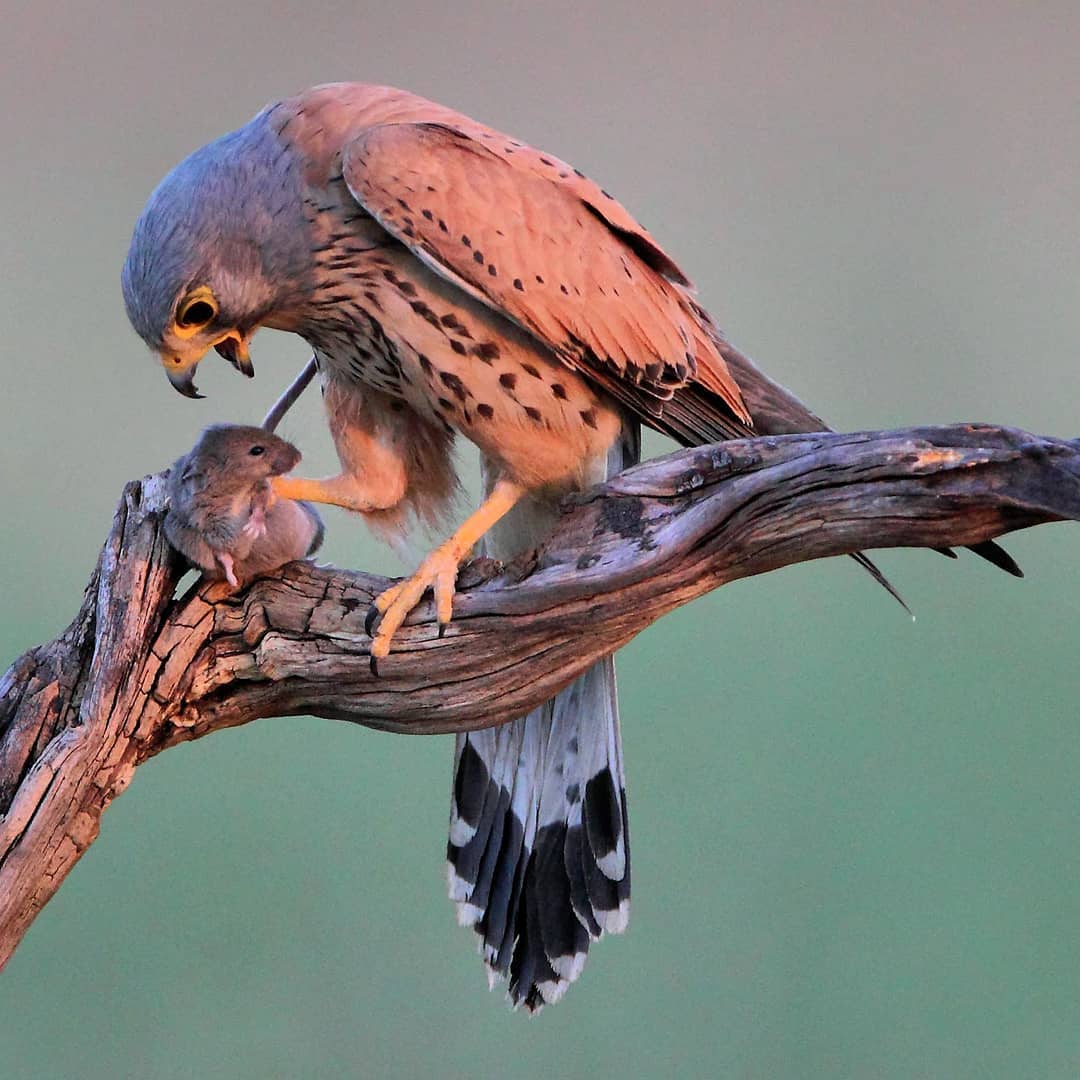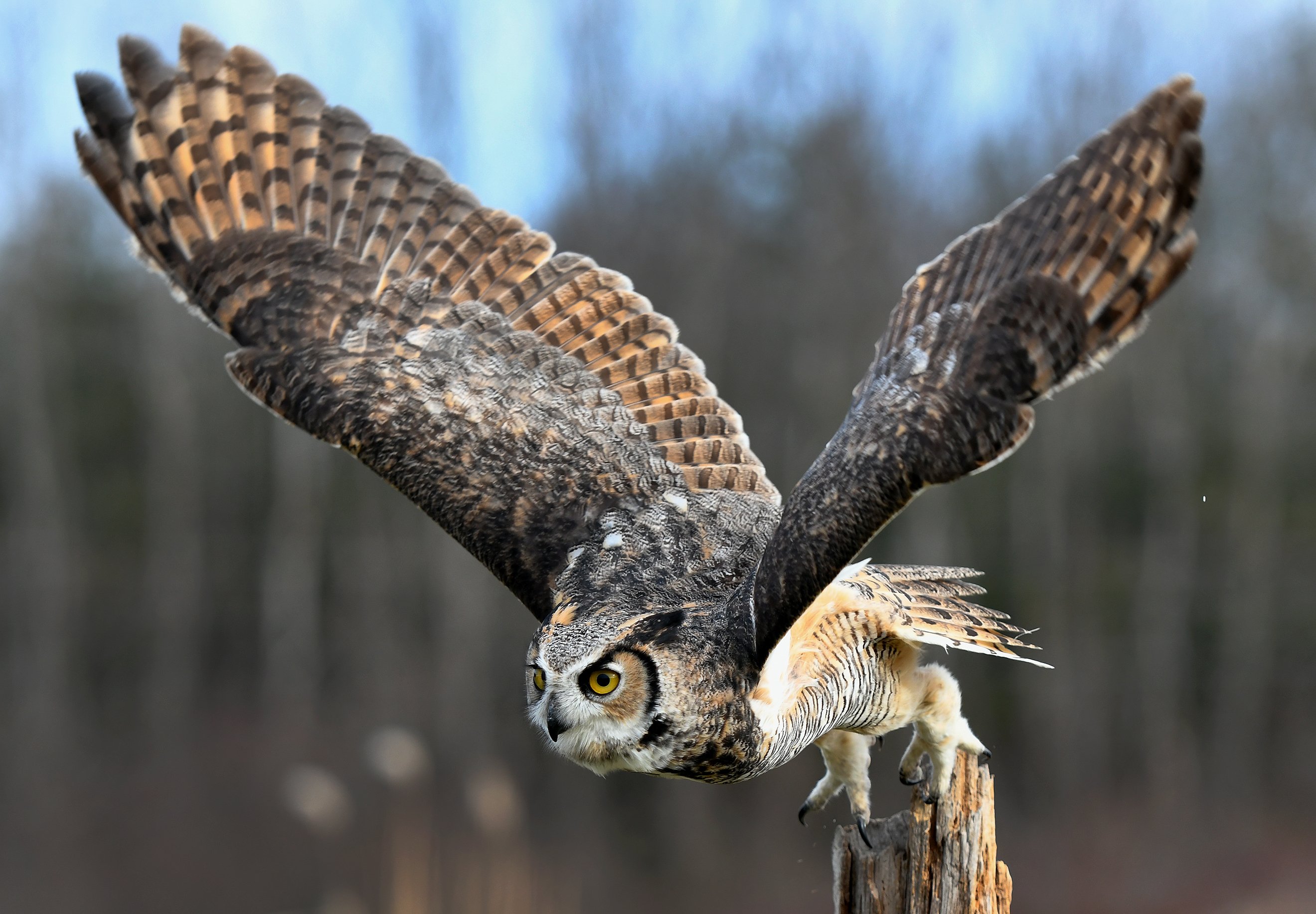
Pairs of peregrines return to the same nesting spot annually. Both birds share incubation, and the chicks hatch over a couple of days. The female lays 3–4 eggs in late March or April, at 2 to 3-day intervals. Their nest (or eyrie) is a slight scrape in earth or old debris. They prefer to nest on cliff ledges, quarry faces, crags and sea cliffs, and have recently started to nest in man-made structures similar to these, including some famous buildings, such as Chichester Cathedral! Tall buildings such as cathedrals are actually ideal for peregrines, as they provide a good vantage point and a flat ledge to nest on. In winter, they’re often seen hunting over marshland on the East coast. They tend to eat medium-sized birds, such as wading birds and pigeons, but have also been known to take smaller birds such as goldcrests, and even bats. Peregrine falcons are the world’s fastest bird, reaching speeds of up to 322 kilometres per hour (200 miles per hour) as they dive-bomb their prey from mid-air. They have a number of other vocalisations. Their alarm call sounds rather like ‘kak-kak-kak-kak’.

Trees, and the males bring food to the females while the eggs are incubated. NestingĪlthough quite a secretive and solitary bird during most of the year, during the breeding season, sparrowhawksĬan sometimes be seen putting on an impressive flap and dive display flight. However, predator and prey relationships are a necessary part of any ecosystem, and the actions of sparrowhawks are not having a negative impact on garden bird populations. They’re particularly drawn to the populations of small birds that cluster around our feeders and bird tables, and this can lead to upsetting encounters.

They’re fast and agile and hunt by surprise, using buildings and plants as cover before popping out at the last moment to catch their prey. Sparrowhawks are woodland birds that have adapted to urban green spaces. Their main call resembles "kekekeke" or "kewkewkewkew". They’re usually silent, but can make a variety of noises, particularly around the breeding season.



 0 kommentar(er)
0 kommentar(er)
